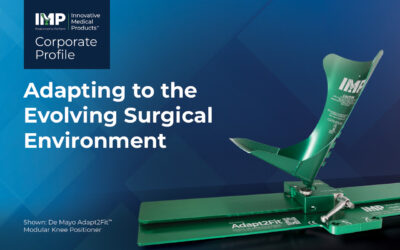On a Mission to Stop HAIs
Xenex Disinfection Services was founded by epidemiologists Dr. Mark Stibich and Dr. Julie Stachowiak. The company’s mission then – and now – is to stop the pain, suffering and deaths caused by hospital acquired infections by destroying the pathogens that cause them. Today, Xenex LightStrike™ Germ-Zapping Robots™ are being used by more than 350 hospitals, surgery centers, long-term acute care and skilled nursing facilities in the U.S., Canada, Europe, UK and Africa.
Surgical site infections (SSI) devastate patients and create a financial burden for healthcare facilities. They are the most expensive healthcare associated infection (HAI) to treat – and the government now requires hospitals to report their SSI rates. Hospitals and surgery centers spend millions of dollars on OR equipment designed to improve the patient experience, yet many use outdated and ineffective methods to disinfect their ORs and prevent SSIs. Xenex CEO Morris Miller recently took some time to share more about the company and its mission.
Q: Can you tell us about Xenex Disinfection Services?
Miller: The Xenex system works by pulsing xenon, an inert gas, at high intensity in a xenon ultraviolet flashlamp. This produces the only broad-spectrum germicidal ultraviolet C (UVC) light, which penetrates the cell walls of microorganisms including bacteria, viruses, mold, fungus and spores. Their DNA is instantly fused so that they are unable to reproduce or mutate, effectively killing them on surfaces without contact or chemicals. The Xenex robot runs in multiple positions (depending on the size of the room) in a 4-minute cycle and doesn’t require warm-up or cool-down time. While most hospitals run the robot in the ORs at the end of the day during the terminal clean, our newest LightStrike robot is so efficient that it can be run in shorter cycles in between cases in the OR to further bring down contamination.

What sets Xenex apart from every other UV disinfection technology are infection reduction results. Every hospital wants fewer infections – and Xenex Germ-Zapping Robots are the only UV disinfection technology that has been shown in multiple peer-reviewed clinical outcome studies to help hospitals reduce infection rates. Eight hospitals have published peer-reviewed studies showing a decrease in infection rates including two reporting reductions in SSIs when our pulsed xenon UV technology was used to disinfect their ORs. Lowell General Hospital had a 46 percent reduction in SSIs and Trinity Medical Center experienced a 100 percent decrease in SSIs after they began using pulsed xenon UV for room disinfection. Other hospitals have published peer-reviewed studies showing significant decreases in their C.diff, MRSA and MDRO infection rates.
Q: What are some advantages your company has over the competition?
Miller: UV has been used for disinfection for decades. According to the GAO, there are 50-plus companies that manufacture UV devices using mercury bulbs. Mercury is toxic and the EPA and World Health Organization want to phase out the use of mercury in hospitals. Unlike the mercury bulb devices, the Xenex LightStrike robot utilizes pulsed xenon to create broad spectrum, high intensity germicidal UV light. Continuous mercury UV produces only single spectrum, low intensity UV light. And intensity matters – pulsed xenon UV destroys pathogens in a different way than continuous mercury UV devices.
Some hospitals are reporting materials damage as a result of exposure to continuous mercury UV light. Since the Xenex device uses a pulsing technology (not continuous exposure) to create UV light and destroy pathogens, no hospitals have reported materials/equipment damage as a result of using Xenex devices.
Hospitals are busy and rooms need to be turned over quickly to accommodate patients who need care. In the OR environment, especially, time matters. It’s physically impossible for the cleaning team to get a room disinfected in the time available using traditional cleaning methods. Xenex’s LightStrike Germ-Zapping Robot disinfects a typical patient room in 8-12 minutes using two to three 4-minute cycles, one cycle on either side of the bed and one in the bathroom. Hospitals are able to disinfect dozens of rooms per day and bring down the facility’s bioburden. In the OR, our robots are used at the end of day for the terminal clean, and they are also used between surgeries, for example when surgeons are doing outpatient total joint cases. It destroys the pathogens lurking on high touch surfaces that you can’t see but can pose a risk to the next patient in that room
You also need to consider the safety of hospital employees using the devices. Mercury UV devices require 4 to 28 mercury bulbs (per device) that contain toxic mercury and may require special handling and precautions in the event of bulb breakage. Each mercury bulb may reach 220 degrees and should not be moved until the bulbs cool to a safe temperature. The Xenex robot uses xenon bulbs that are environmentally friendly and don’t require any warm-up or cool down time.

Q: What are some challenges that your company faced last year?
Miller: We spend a lot of time educating hospital decision makers about the technologies available for room decontamination. There is a lot of misinformation in this market, so buyers need to ask the right questions. Not all UV is the same – Xenex has had multiple hospitals report infection rate reductions in peer-reviewed journals. As professionals are analyzing UV technologies, they need to look at the peer-reviewed literature supporting the device’s claims with regards to reducing infection rates at hospitals. We repeatedly hear the mercury UV vendors tell hospital decision-makers that all UV is the same and that their device works just like pulsed xenon UV. And it’s not true. There are scientific differences between the way that pulsed xenon UV and mercury UV emit germicidal UV-C light. This is like the difference between using a garden hose or a power washer to clean a deck or driveway at a house. Intensity matters!

Q: Can you share success stories?
Miller: That’s the best part of our job – hearing about the success hospitals are having in reducing their infection rates. One hospital recently needed us to help them battle and defeat a MRSA (Methicillin-resistant Staphylococcus aureus) outbreak that occurred in the hospital’s mother and baby unit. They were not yet a customer, but called and asked if Xenex could help. More than four dozen patients (mothers and newborn babies) had become infected with MRSA. Desperate to contain and stop the MRSA infections from spreading, the hospital needed to resolve the situation safely, effectively and quickly. We deployed two of our robots and employees to quickly disinfect the entire unit and no new MRSA infections were reported after the disinfection took place. They are now a Xenex customer.
Another hospital selected Xenex because of clinical evidence, but also because of Xenex’s high level of customer support that began even before the robots were implemented. As the hospital was evaluating UV disinfection technologies, they had a norovirus outbreak. At no charge, Xenex came in with staff and robots and disinfected the affected unit. We wiped out the norovirus in three days and the EVS director said that she’s never seen an outbreak contained and shut down so quickly. They have since deployed two Xenex robots and have seen a decrease in their Clostridium difficile (C.diff) infection rates.

Q: Tell us about your company’s facility?
Miller: Xenex is based in San Antonio, Texas, and that’s where all of our robots are manufactured. Each robot leaves our facility with a name on a nameplate, but hospitals usually choose to rename their robots. Some hospitals host a naming contest among their employees, some invite the community to name their robots, and others have named robots after a donor. The team that uses the robots understand that this is their newest team member – it’s a new weapon in their battle to keep patients safe.
Q: Is there anything else you want readers to know about your company?
Miller: Hospitals that use Xenex have the opportunity to reduce infections by destroying the pathogens that cause them – which can save or change patient lives. Hospitals engaged in HAI reduction programs using Xenex are now analyzing their HAI data against their use of the Xenex robots. There is clear evidence that when robot usage increases, the infection rates decrease. The more you run the robot, the better a reduction in infection rates can be achieved.
As professionals are analyzing UV technologies, they need to look at the peer-reviewed literature supporting the device’s claims with regards to reducing infection rates at hospitals. In addition to peer-reviewed evidence that the UV technology can bring down infection rates, hospitals should ask vendors about the implementation and training they provide to ensure infection reduction success. Xenex, for example, sends in an implementation team to work with the hospital’s EVS and IP staff to determine the optimum protocol for running the robots. Xenex team members also train the employees who run the robots. Hospital administrators are given access to a portal where they can review robot usage in real-time, and measure their HAI reduction benchmarks.
For more information about Xenex Disinfection Services visit www.Xenex.com.









